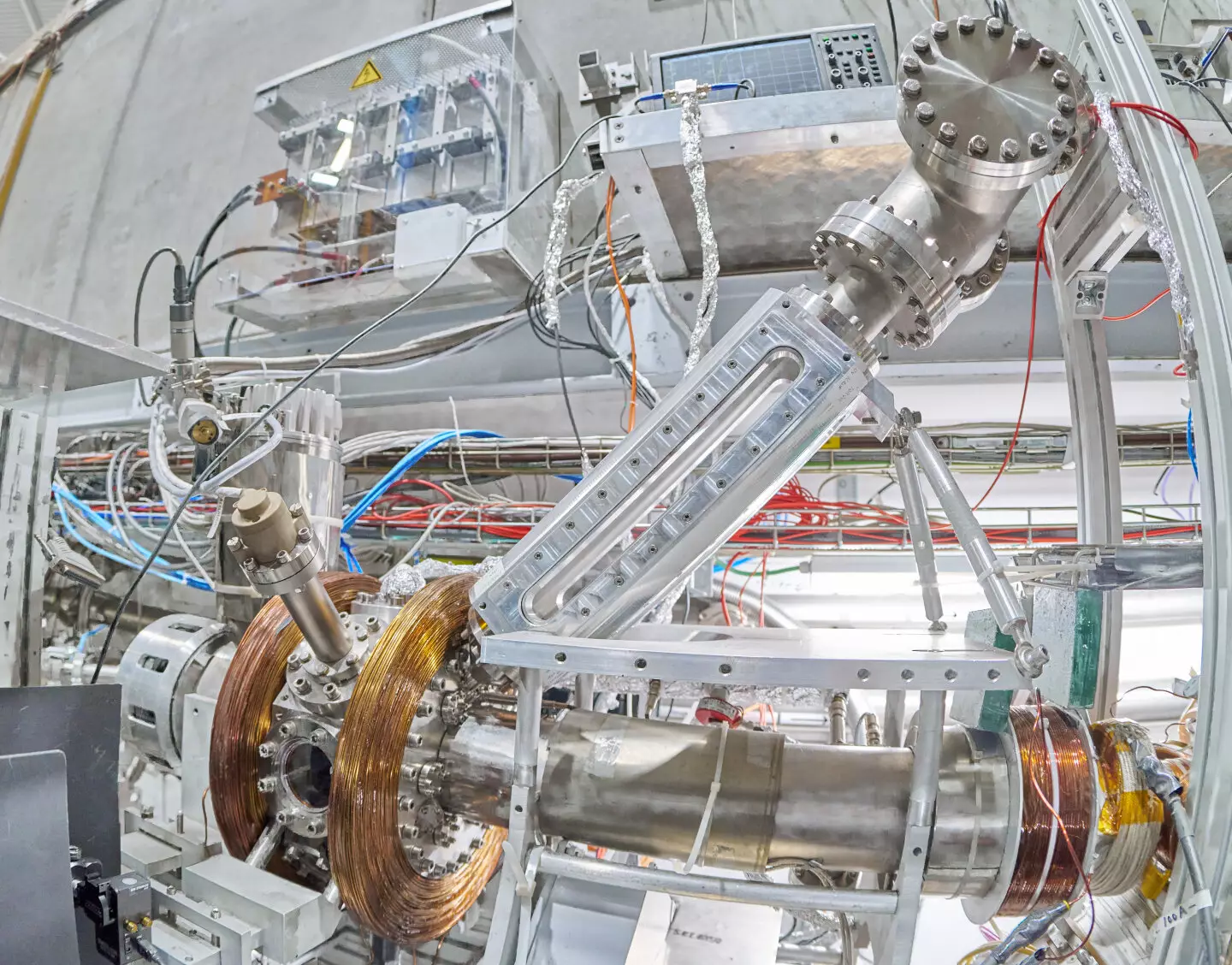Antimatter research is a cutting-edge field that has always captured the imagination of scientists and science fiction enthusiasts alike. The AEgIS experiment at CERN’s Antimatter Factory is at the forefront of producing and studying antihydrogen atoms to unravel the mysteries of antimatter.
In a recent publication in Physical Review Letters, the AEgIS collaboration revealed a groundbreaking experimental achievement that not only propels them towards their goal of testing the gravitational behavior of antimatter but also opens doors to a range of new antimatter studies. One of the most exciting prospects is the potential creation of a gamma-ray laser that could revolutionize our understanding of the atomic nucleus and find applications beyond the realm of physics.
To create antihydrogen, AEgIS employs a sophisticated process. A beam of positronium, consisting of an electron orbiting a positron, is directed into a cloud of antiprotons that have been generated and slowed down in the Antimatter Factory. When positronium and an antiproton converge in the cloud, the positronium relinquishes its position to the antiproton, resulting in the formation of antihydrogen. This method not only allows for the production of antihydrogen but also provides an avenue to study positronium itself, which is an intriguing antimatter system with a fleeting lifespan.
One of the most remarkable achievements of the AEgIS team is the successful implementation of laser cooling on a sample of positronium. By employing laser cooling techniques, the team managed to significantly reduce the temperature of the sample, showcasing their ability to handle the experimental challenges associated with positronium studies. This breakthrough presents new possibilities in antimatter research, enabling high-precision measurements of the properties and gravitational behavior of positronium.
With the successful laser cooling of positronium, AEgIS is now poised to explore a multitude of avenues in antimatter research. The creation of a positronium Bose-Einstein condensate, where all constituents occupy the same quantum state, holds great promise. This condensate could potentially generate coherent gamma-ray light through the annihilation of matter-antimatter pairs, offering a new window into the atomic nucleus and paving the way for advanced research applications.
The AEgIS experiment at CERN represents a cornerstone in antimatter research, pushing the boundaries of scientific exploration and unlocking new possibilities in the study of exotic matter-antimatter systems. The recent breakthrough in laser cooling of positronium sets the stage for a new era of discoveries and innovations in fundamental and applied research, with the potential to revolutionize our understanding of the universe at its most fundamental level.


Leave a Reply